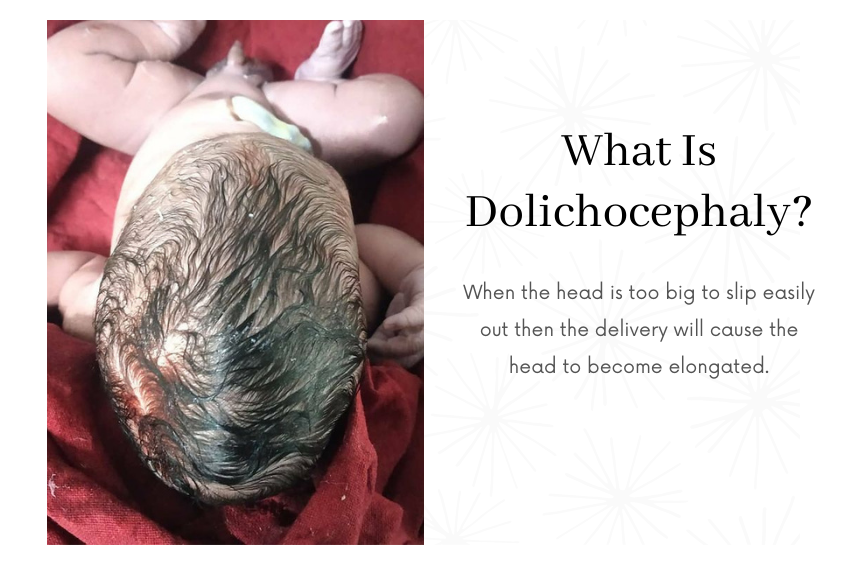What Can Be Done When an Infant Has An Elongated Head?
/
As a great grandmother, Vera considers herself fairly experienced in differentiating between the many different head shapes that babies are born with or develop in early infancy. She tries not to interfere with the daily upbringing of her offspring but when it comes to health issues, she will let her opinion be heard. She has had a few mild confrontations when close relative’s babies showed signs of some abnormalities in their head shapes. Recently Vera had the privilege of visiting her new baby great-granddaughter. The most adorable face and features greeted her upon her arrival. However, when the hat was removed, she could not help but notice the baby’s elongated head. Her granddaughter (the new mom) asked her cautiously if she should be concerned about the baby’s head shape. “My doctor said it will get better by itself”, was the comment made by this enthusiastic new mother. Not wanting to scare the new mother, Vera answered in the affirmative that yes, it usually gets better but if needed, a cranial helmet will do the trick with only a wearing time of a couple of months.

When thinking of cranial therapy, the first and most common situation that one thinks of is plagiocephaly also known more commonly as flat head syndrome. This syndrome generally is caused by the baby sleeping on its back in the same position for prolonged periods, however, it could also be noticed right after birth as well. Some causes could be multiple births where the baby is in one position for extended time frames, a certain way that the baby lays in the womb or a premature or breech position birth.
What Is Dolichocephaly?
There is another condition that comes when the baby goes through the birth canal and is delivered naturally that is called dolichocephaly. Since the bones in the head are flexible and soft, if the head is too big to slip easily out then the delivery will cause the head to become elongated. This would more commonly occur in larger babies but could just as well happen with infants of more typical weight. It depends on how big the pelvic symmetry is for each individual mother.
Dolichocephaly is diagnosed when the newborn’s skull has a cephalic index (measurement of the baby’s head) of less than seventy-five on the cephalic index scale. The way this measurement is derived is by multiplying the maximum width of the head by 100 and dividing that number by the maximum length of the head. Between 76 and 80 is considered a normal measurement. The lower the cephalic index the longer the head.
It’s quite frequent for some newborns’ heads to appear slightly misshapen after the birth for the first few weeks of their new life. It is a good thing that the babies’ heads are moldable at birth since this situation can allow it to accommodate any critical situations more easily during childbirth.

A baby’s head is made of several soft plates that have not fused fully together at birth. This elasticity makes the passage through the birth canal happen more easily. The infant’s brain grows rapidly and by being flexible these plates allow the skull to grow accordingly. Although most misshaping of the head occurs post birth there are twenty percent of infants that are born with elongated heads. (Academy of American Pediatrics – AAP)
According to the AAP, most cases of dolichocephaly are not serious and will not affect the health of the infant. There are, however, some cases that are more severe and can be related to delayed physical skills such as reaching and grabbing.
Causes of Dolichocephaly
Misshapen Head Caused by Breech Birth
The fear of breech birth is understandable. In normal delivery the head is the first part of the body to emerge. In a breech delivery there is the fear of the unpredictability of a possible entrapment of the head. No matter how tiny the baby is no one can predict what will happen during a breech delivery. Many large breech babies come out effortlessly and others who are smaller get stuck in the birth canal. In any case there is a greater chance of dolichocephaly in breech deliveries. This minor cranial malformation can begin in utero with the head crunched at the upper part of the uterus. Forces such as posterior placentas and first pregnancy attribute to the chance of a breech delivery and subsequent dolichocephaly.
When the legs and arms appear first, the head will be in the anterior-posterior diameter of the mother’s pelvis. For the baby’s head to become exceptionally elongated there will be an almost perpendicular meeting of the narrowest part of the pelvis with the longest diameter of the baby’s head and the head is in danger of getting stuck at the chin. A rotation of the head may be required and if the head is very elongated it can cause damage to the mother’s pelvic floor. An experienced midwife or doctor can hopefully ease the baby out successfully without surgical intervention. In any case, the baby’s head will be through a lot going down the birth canal and no wonder it will look a little odd.
Babies Born Preterm
Premature babies who are born at less than thirty-two weeks are more likely to have a condition of dolichocephaly. While in the NICU, preterm babies will be in the crib most of the time causing their soft heads to become misshapen. They are sometimes placed (while in the nurse’s watch) on their stomachs or sides to protect them from risks such as sleep apnea, bradycardia (a slower than normal heart rate) and acid reflux.
Craniosynostosis
This is a condition when the bones of the baby’s skull fuse together too early before the brain is fully developed. When the skull closes too quickly in a certain area it prevents the brain from growing in only that specific area while other parts of the brain continue to grow. This uneven growth causes the skull to form in an uneven shape.
Treatments for Dolichocephaly
Treatments for elongated head syndrome are similar to the treatment for plagiocephaly or flat head syndrome.
Physical Therapy
A competent therapist will be aware of any signs of developmental delays and will help the parents create a regimen of positioning and stretching exercises that they can practice at home with their baby.
Cranial Helmets
After a few months at home if the baby’s head does not reach a normal range shape based on the cephalic index a cranial helmet specialist should be consulted.

Surgery
In cases of severe craniosynostosis the affected suture (expansion joint of the skull) is removed, correcting the baby’s misshapen head. This surgery is usually performed when the baby is a few months old for the best results.
Final Words
A baby born with an elongated head can be quite scary, sometimes reminding the parents of some morbid characters. The good news is that the majority of these cases do not require professional intervention. Parents may have fears of the future and it is always best to air these concerns with your baby’s pediatrician. There are support groups for parents whose baby’s head appears to be misshapen at birth which can be caused by premature delivery, breech delivery and prolonged hospital stay. At this point there is no official consensus if this condition is genetic. There are several practical steps for concerned parents to take at home to assure that their baby’s head will fit into a normal range of cephalic index (measurement of the baby’s head).
The Academy of American Pediatrics recommends the following exercises for dolichocephaly.
1) For babies with skull deformities an increase in tummy time is imperative. If you gave your older children ten minutes of tummy time this will not be enough for this particular baby. Many of the baby’s extremities will be moved during tummy time such as their head, neck, back, shoulders, arms, and hips. You may have to work the minutes up gradually until you get to the required amount of tummy time advised by your physician or cranial specialist if consultation was necessary.

2) Keep changing the part of the crib where you lay the baby down. Even though doctors are still advising back sleeping by changing the place that you lay them down helps. This is because babies who are sensitive to noise and motion will move their heads and bodies upon hearing a person approach. This means that alternating their position in the crib will give equal opportunity for the right and left sides of the head to turn when the baby hears a noise.
3) While feeding your baby his or her bottle alternate arms in order to keep the head growing evenly. For breastfeeding moms this happens naturally. Try not to be self-conscious about your baby’s head. Most infants today wear hats all day and no one but you will notice the elongation. As the baby gets older and you do not see an improvement, taking your baby to a cranial specialist for therapy or a helmet will ensure that he or she will not suffer in the future when a hat will no longer be covering their head.

Cranial Therapy Centers is the only early interventions cranial center in the United States which provides both helmet and manual therapy treatment. We are American Board for Certification in Orthotics, Prosthetics and Pedorthics Facility. Visit us in Lakewood NJ, at 1352 River Ave Unit 14, Lakewood NJ, 08701 or in Teaneck NJ at 1086 Teaneck Road Suite 3F, Teaneck, NJ 07666. You can also email us info@cranialtherapycenters.com
